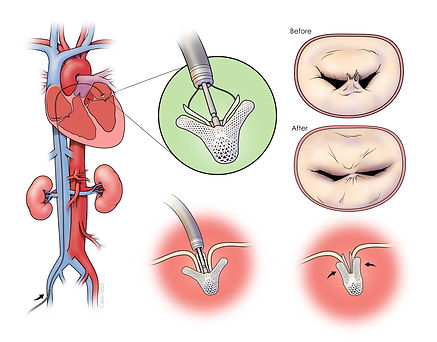
MITRAL VALVE
Background
The heart has 4 valves that regulate the flow of blood. These include the aortic, mitral, tricuspid, and pulmonic valve. Valves are designed so that blood travels in one direction. Valves prevent the backward flow of blood. There are 2 things that can go wrong with valves:
-
They can narrow and get tight. The medical term for this is “stenosis”
-
Or valves can become leaky and blood flows backward. This is called “regurgitation”
Mitral valve disease is one of the most common valvular heart diseases in the world, yet it is still undertreated. Patients with severe mitral regurgitation and comorbidities survive only 2.6 years without correction. Intervention can improve survival.
In patients with mitral regurgitation, some of the blood leaks back into the heart and lungs. The heart has to work harder to get blood to the body and with time, the heart begins to fail. Common symptoms of mitral regurgitation include:
-
Fatigue
-
Shortness of breath
-
Arrhythmias or atrial fibrillation

Diagnosis
Click the link below to learn more about treatment options for mitral regurgitation:
The most common ways of diagnosing mitral regurgitation are by either listening to the heart with a stethoscope or by performing an ultrasound of the heart.
Here’s what mitral regurgitation sounds like with a stethoscope: >

MitraClip
A tiny clip is delivered through the groin to repair the malfunctioning mitral valve without having to open the chest (i.e. sternotomy).

Traditional Open Heart Surgery
The chest is opened (i.e. sternotomy) with direct access to the mitral valve.




